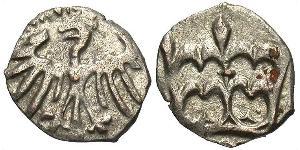States/Countries -> Kingdom of Poland (1025-1569)
| preceded by | |
|
|||||||
|
|
|||||||
| succeeded by | ||||
|
| Kingdom of Poland (1025-1569)from the Wikipedia | Read original article |
From Wikipedia, the free encyclopedia
|
|
This article may be expanded with text translated from the corresponding article in the Polish Wikipedia. (January 2014)
Click [show] on the right to read important instructions before translating.
|
| Kingdom of Poland | ||||||
| Królestwo Polskie (pl) Regnum Poloniae (la) |
||||||
|
||||||
|
||||||
| Motto Nic o nas bez nas "Nothing about us without us" |
||||||
| Anthem Gaude Mater Polonia[1] "Rejoice, oh Mother Poland" |
||||||
|
The Kingdom of Poland between 1386 & 1434.
|
||||||
| Capital | Kraków | |||||
| Languages | Polish, Latin | |||||
| Religion | Roman Catholic | |||||
| Government | Hereditary Monarchy | |||||
| Monarch | ||||||
| - | 1385–1389 | Jadwiga (first) | ||||
| - | 1548–1569 | Sigismund II (last) | ||||
| Legislature | Sejmik | |||||
| - | Privy Council | Senate | ||||
| Historical era | Middle Ages | |||||
| - | Union of Krewo | 14 August 1385 | ||||
| - | Statute adopted | 3 May 1505 | ||||
| - | Union with Lithuania | 1 July 1569 | ||||
| Currency | Polish Złoty | |||||
The Kingdom of Poland (Polish: Królestwo Polskie; Latin: Regnum Poloniae), was the Polish state created by the Union of Krewo, uniting Poland and Lithuania under the rule of a single monarch. Later, elected monarchs of both states happened to be the same persons, or members of the same royal family. The union was transformed to a closer one by the Union of Lublin in 1569, which was shortly followed by the end of the Jagiellon dynasty that had ruled Poland for two centuries.
See also[edit]
- Crown of the Kingdom of Poland
- Culture of medieval Poland
- History of Poland (1385–1569)
- History of Poland during the Jagiellon dynasty
| Wikimedia Commons has media related to Kingdom of Poland — Jagiellonian Dynasty (1385–1569). |
References[edit]
| This Polish history–related article is a stub. You can help Wikipedia by expanding it. |
Categories:
- Former countries in Europe
- States and territories established in 1385
- States and territories disestablished in 1569
- Kingdom of Poland
- History of Poland (1385–1569)
- Political history of Poland
- Former monarchies of Europe
- Former Slavic countries
- 1385 establishments in Poland
- 1569 disestablishments in Poland
- 14th century in Poland
- 15th century in Poland
- 16th century in Poland
- Polish history stubs











